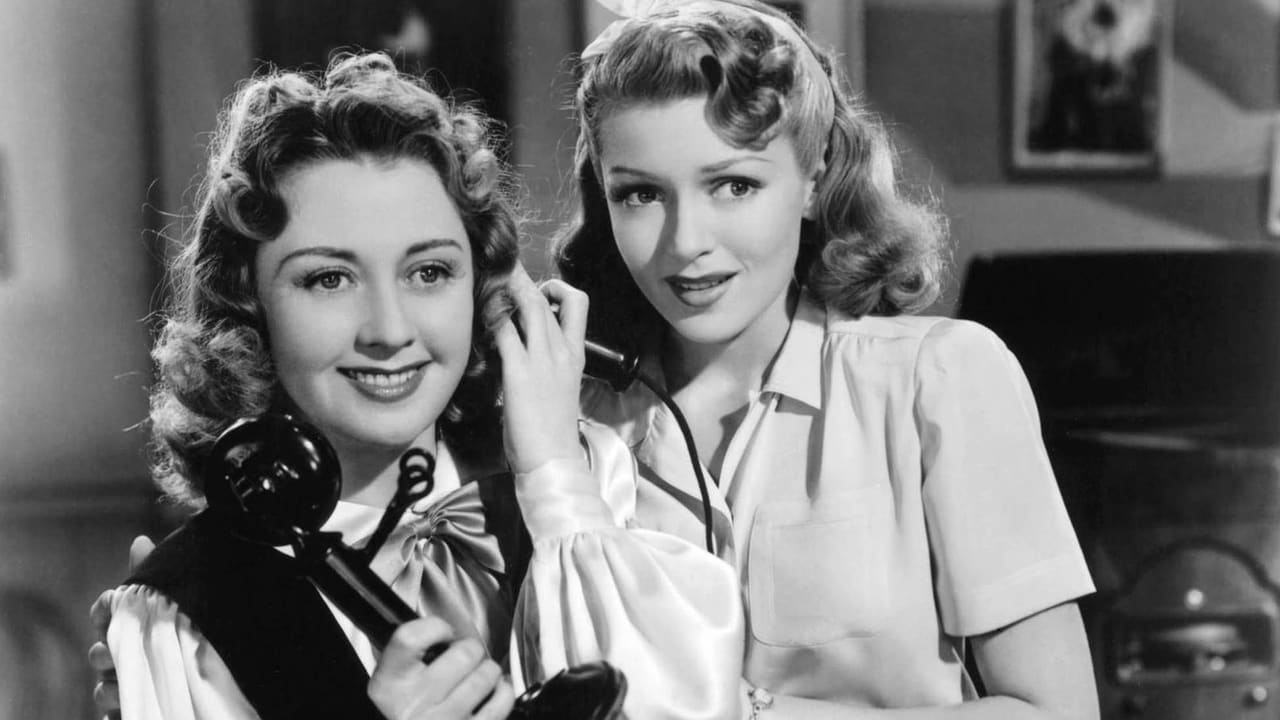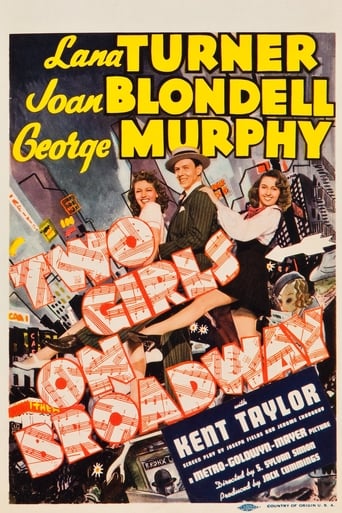

I'll be honest, the main reason to watch this film is the gorgeous Lana Turner, who was just 19 years old when she starred in it. It's not her first film, but it was made just as her career was about to take off. Her acting is a little clumsy in places (as is George Murphy's), but it's a delight to see her dancing, and each of her close-ups. The story is a little thin, and has Joan Blondell and Turner as sisters, who come to New York to try to get jobs on stage with Blondell's slick-talking but affable fiancé, Murphy. Unfortunately, between the two of them, it's only Turner they want, and Blondell is relegated to selling cigarettes. Murphy tries to look out for Turner and shield her from a lecherous playboy (Kent Taylor), but then things get worse for Blondell when Murphy starts falling for Turner himself. There are some nice scenes of Blondell sacrificing herself with a brave face; she does the best she can with the material, and her character is a model of class. Unfortunately, there's also an extended scene with a Japanese butler that has some ugly racism on full display. The film wants to be a comedy, a romance, and a musical, and is pretty average at all three. It's concise at 73 minutes, and I liked seeing Turner and Blondell, but if those two aren't of interest, you should probably skip this one.
... View MoreGeorge Murphy (Eddie) gets his song and dance act into a New York Broadway show. He also wangles an audition for his fiancé Joan Blondell (Molly) and her kid sister Lana Turner (Pat). However, on seeing the audition, the show's director Richard Lane (Bartell) throws them a curve ball by accepting Lana as a partner for Murphy and relegating fiancé Joan to the role of cigarette girl, which she does quite well "Cigars and cigarettes!" Joan and Murphy had expected to resume as a dance team, but sister Lana has now been pushed to the forefront. Throw in some love complications and watch the film unravel itself in a rather extraordinary way.Wow, the plot of this story is insane. You have to feel sorry for Joan Blondell. Not only does she seem to be a better dancer than Lana, but she also has the security of a loving fiancé. She doesn't get much by the end of the film. There are funny moments, eg, Lana's relief that she has been sleeping in her clothes so that she doesn't have to bother getting dressed – an old student trick. However, there is also some seriously warped logic going on. Joan Blondell's sisterly attitude towards relationships just doesn't ring true, I'm afraid.The film is enjoyable, not for the stupid storyline, but for watching Lana Turner dancing her numbers. The studio was definitely looking for a copycat Astaire-Rogers partnership, and Lana definitely cuts it. How funny that Joan spends the film trying to fend her sister away from producer playboy Kent Taylor (Chat). Little did they all know that Lana (in real life) could seriously outplay him! The film has an ambiguous ending – I really hope that reporter Wallace Ford (Jed) made a visit to Nebraska as he said he would.
... View MoreLana Turner proved that she could really dance up a storm in this 1940 charmer about the ultimate sacrifice that her sister (Joan Blondell) makes for her.When both sisters come to New York, they follow Blondell's beau, a wonderful George Murphy, in this film. As fate would have it, the director of the show is impressed with Turner but sees nothing ahead for Blondell except a job as the cigarette-girl. Not only does Blondell miss stardom, boyfriend, Murphy (Eddie) falls for Turner as well. So as not to hurt her sister, Turner is ready to marry the producer of the show, a wealthy womanizer who has wed 4 times.The story concludes as best as possible with Blondell taking a fast exit back to Nebraska. Look for Paul Ford, as a gossip columnist in the film. He is hard to recognize due to the date of the film and the fact that he is much thinner. The film leaves you with the question of whether Ford and Blondell could ever get together.Blondell, as the devoted sister, sacrifices both career and love, for her sister. This film is sentimental and might have worked better if it had been shot in Technicolor.Few realize that George Murphy, the future Republican senator from California, was quite a song and dance man in his day.
... View MoreEvidently MGM was grooming Lana Turner to be featured in musicals at this stage of her career. Unfortunately that effort was abandoned, with mixed results. In this conventional backstage romantic triangle, she is a very winning performer, and a surprisingly effective dancer in her three musical numbers (partnered in two by George Murphy and in one by Joan Blondell). Her spirited youthfulness and fresh beauty are put to good use in her role as an innocent small-town girl who (almost) is spoiled by some wily denizens of big, bad Broadway. Joan Blondell plays the protective older sister convincingly, willing to sacrifice her own happiness for that of "the kid." Not many viewers would associate Lana Turner with this type of picture, but, as indicated, she more than holds her own. Too bad that in her pictures, as in her life, she became an "experienced" woman too soon.
... View More